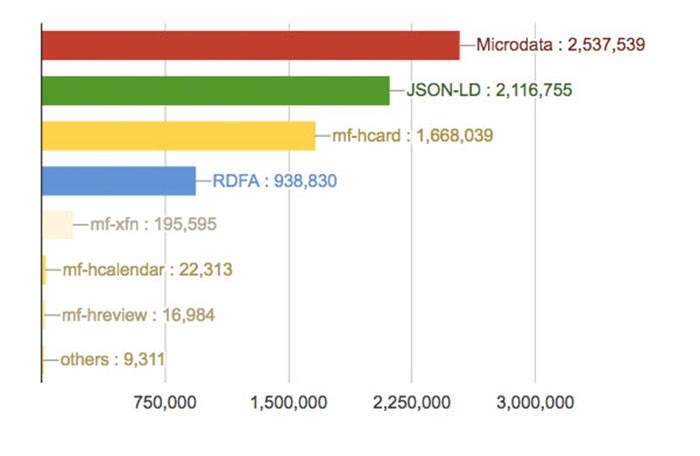Unlocking SEO Potential: Crafting a Powerful Site Structure
In the competitive online landscape, having a well-organized site structure is critical to maximizing SEO potential. Beyond just boosting visibility, a strong site structure makes your content accessible to users and easy for search engines to understand and rank. Here, we’ll explore the components of an effective site structure, the role of structured data, and best practices to elevate your site’s SEO performance.
Master Website Structure for Maximum SEO Impact
A well-crafted site structure guides users to the information they need while signaling relevance and organization to search engines. By defining a logical flow and navigation system, you help both users and search engines understand how your site’s pages relate to one another. Effective site structure enhances:
- User Experience: A clear, intuitive structure helps visitors navigate and find information quickly.
- Indexability: Organized sites are easier for search engines to crawl and index.
- Ranking Potential: Sites with robust structures tend to rank higher because search engines can better understand and prioritize their content.
Elements of a Strong Site Structure
A solid site structure involves multiple components working together to create a cohesive experience:
-
Hierarchy and Navigation: Clear hierarchies ensure that pages are logically organized, typically in categories and subcategories, helping search engines recognize your site’s most important content.
-
Internal Linking: Linking related pages strengthens SEO by distributing “link equity,” or ranking power, across your site and guiding search engines through the relationships between content.
-
URL Structure: Clean, descriptive URLs give users and search engines a snapshot of the page’s purpose. Structured URLs follow a pattern (e.g.,
website.com/category/subcategory/page) that reflects the hierarchy and organization. -
Sitemaps: XML sitemaps offer a roadmap for search engines, highlighting important pages and facilitating efficient crawling.
-
Breadcrumb Navigation: Breadcrumbs provide a secondary navigation path that shows users where they are within the site structure, improving both usability and SEO by highlighting page relevance.

The Power of Structured Data in SEO
Structured data, often implemented through Schema.org, gives search engines detailed information about your content, making it easier to display in enhanced formats like rich snippets, answer boxes, and widgets. With the growing importance of the Semantic Web, search engines aim to understand content context beyond keywords, establishing meaning through relationships between ideas. Structured data enhances:
- Visibility in Search Results: Pages with structured data are more likely to appear in featured snippets, increasing click-through rates.
- User Engagement: Enhanced search results with rich snippets attract more clicks and create an engaging search experience.
- Credibility: Structured data ensures information is accurately represented, building trust with users and search engines.
Choosing the Right Markup Language
Implementing structured data involves selecting both a vocabulary and a markup format. Here’s a breakdown:
-
Vocabulary: Schema.org, supported by major search engines, is the leading vocabulary choice. It includes terms to describe everything from products and articles to reviews and events.
-
Markup Formats: JSON-LD is Google’s preferred markup format due to its ease of use and flexibility. Other options include Microdata and RDFa, but JSON-LD is the most efficient for SEO purposes.
Steps to Implement an SEO-Optimized Site Structure
-
Map Out a Logical Hierarchy: Define a category-subcategory structure that reflects your content areas. This helps search engines grasp content themes and relations.
-
Optimize Navigation and Internal Links: Incorporate a menu that highlights key pages, and add internal links within content to guide users and search engines to relevant information.
-
Implement Structured Data: Use JSON-LD and Schema.org to provide search engines with detailed content context. Structured data can highlight reviews, FAQs, events, and other important site features.
-
Create Clear, Descriptive URLs: Use URLs that reflect the site structure and keywords. Avoid long, random strings or characters that don’t offer information about the page content.
-
Generate and Submit a Sitemap: Use tools like Google Search Console to submit an XML sitemap, improving indexation and ensuring search engines access all important pages.
-
Add Breadcrumbs: Breadcrumb navigation shows the page path, enhancing user experience and offering additional ranking signals.
Enhancing Site Structure: Best Practices
- Mobile-Friendly Design: With mobile-first indexing, sites should prioritize responsive design, ensuring easy navigation on all devices.
- Fast Page Speed: A quick-loading site reduces bounce rates and improves user satisfaction, positively impacting rankings.
- Regular Structure Audits: Use tools like Screaming Frog, SEMrush, or Google Analytics to monitor site health, fix broken links, and update structures to adapt to content growth.
The Takeaway: Build a Site Structure That Works for You and Search Engines
An optimized site structure doesn’t just help with SEO rankings; it makes your website a better resource for visitors, too. By focusing on hierarchy, clean URLs, structured data, and internal linking, you’ll create a site that’s easy to navigate, valuable to users, and optimized for search engines.
For more in-depth guides on web traffic and SEO, visit the Targeted Visitors Blog. Here, you’ll find actionable tips and strategies for driving sustainable, organic growth for your website.

